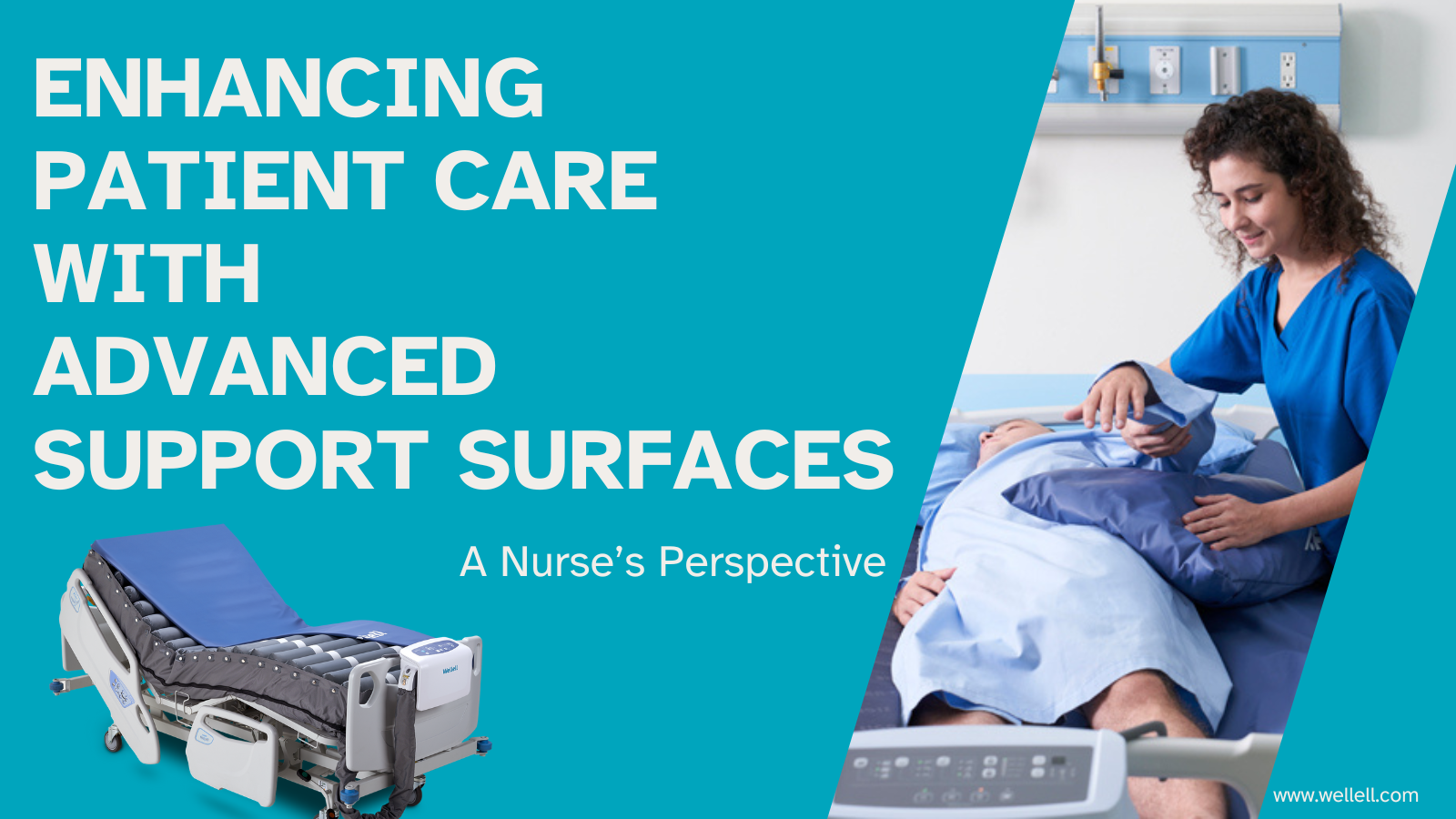Enhancing Patient Care with Advanced Support Surfaces: A Nurse’s Perspective

In today’s fast-paced healthcare environment, patient outcomes are closely tied to the quality of care provided by healthcare professionals and the tools they utilize. One critical aspect of care is the management and prevention of pressure injuries, which continue to be a significant challenge in hospitals and long-term care facilities. As nurses play a vital role in reducing the occurrence of these injuries, the use of advanced support surfaces has emerged as an essential tool in improving patient outcomes and lightening the workload for nursing staff.
The Growing Concern of Pressure Injuries
Pressure injuries, also known as bedsores or pressure ulcers, affect patients with limited mobility, often occurring in those who are bedridden or wheelchair-bound. These injuries can lead to severe complications, increasing patient discomfort, lengthening hospital stays, and adding to healthcare costs. According to the Agency for Healthcare Research and Quality (AHRQ), hospital-acquired pressure injuries (HAPI) affect 2.5 million patients annually, contributing to nearly 60,000 deaths each year in the U.S..
For nursing teams, the prevention of pressure injuries is a top priority. However, manual repositioning of patients, frequent skin assessments, and ensuring optimal pressure redistribution are time-consuming and physically demanding tasks. It is here that advanced support surfaces, such as air mattresses and powered pressure relief systems, come into play.
Proven Nursing Interventions for Pressure Injury Prevention
Preventing pressure injuries requires a multi-pronged approach, with nurses playing a central role. Common nursing interventions include:
- Frequent Repositioning: Turning patients at least every two hours is a widely recommended practice to relieve pressure on high-risk areas such as the heels, sacrum, and hips. This intervention reduces the likelihood of sustained pressure causing tissue damage.
- Skin Assessments: Regular inspection of the skin—at least once per shift—is critical to detect early signs of pressure injury development. Nurses should focus on high-risk areas, looking for redness, discoloration, or breaks in the skin.
- Moisture Management: Keeping the patient’s skin dry and clean is essential in preventing skin breakdown. Low-air-loss support surfaces can help maintain a dry environment by wicking away moisture, which contributes to pressure injury prevention.
- Optimal Nutritional Support: Ensuring patients receive adequate nutrition and hydration supports skin integrity and healing. Protein-rich diets, for instance, are essential for maintaining healthy skin.
How Advanced Support Surfaces Improve Patient Care
Advanced support surfaces, specifically designed to reduce the risk of pressure injuries, assist nurses in these interventions by redistributing body weight and minimizing prolonged pressure on vulnerable areas. Alternating pressure mattresses and low-air-loss systems are especially effective, providing consistent airflow to keep the skin dry and relieving pressure through alternating inflation and deflation cycles.
From a nurse’s perspective, these surfaces can significantly alleviate the burden of constant repositioning, allowing caregivers to focus on other critical aspects of patient care. A study by the European Pressure Ulcer Advisory Panel (EPUAP) found that patients on advanced support surfaces required fewer manual repositioning interventions, contributing to reduced workload and improved care outcomes.
Battery-Backed Solutions in Emergencies
In addition to comfort and injury prevention, the Optima Auto comes equipped with a battery backup system, ensuring continued operation during power outages. This feature is critical, particularly in emergency situations like natural disasters, where uninterrupted care can save lives. According to the Centers for Medicare & Medicaid Services (CMS), maintaining emergency preparedness is a regulatory requirement for hospitals, and Optima Auto’s battery-backed functionality ensures compliance while offering peace of mind for caregivers (The Joint Commission).
Innovative Solutions for Pressure Injury Prevention
At Wellell America Corp., we understand the importance of equipping healthcare providers with the right tools to deliver superior care. Our Serene Air support surface combines alternating and low-air-loss therapies, offering optimal pressure redistribution and microclimate management. This ensures both skin protection and patient comfort. The advanced design of the Optima Auto mattress further automates pressure relief, adapting to patient movements and needs without manual intervention, making it a powerful ally in both patient care and nursing efficiency.
By investing in the right support surfaces, hospitals and long-term care facilities can significantly reduce pressure injury risks while also improving staff workflow and morale. At Wellell, we are committed to supporting medical professionals with cutting-edge technology that delivers outstanding patient care.
Reach out to us for more information on how our advanced support surfaces can
elevate your care standards.
- Agency
for Healthcare Research and Quality (AHRQ). (2020). Preventing Pressure
Ulcers in Hospitals: A Toolkit for Improving Quality of Care.
Retrieved from AHRQ.gov.
- European
Pressure Ulcer Advisory Panel (EPUAP). (2019). Pressure Ulcer
Prevention Guidelines. Retrieved from EPUAP.org.
- National
Pressure Injury Advisory Panel (NPIAP). (2020). Prevention and
Treatment of Pressure Ulcers/Injuries: Clinical Practice Guidelines.
Retrieved from NPIAP.org.
- Whitney,
J. D. (2021). "Moisture and Pressure Ulcer Development: A Clinician’s
Guide." Journal of Wound, Ostomy and Continence Nursing,
30(6), 297-305.

